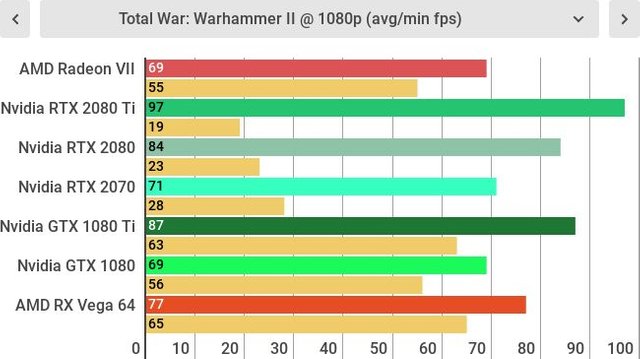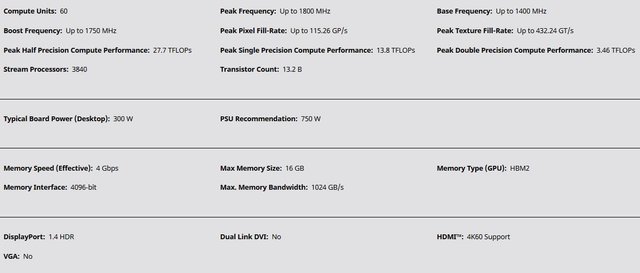NEW GAMING GPU!!!
Amd Radeon VII is the new Amd video card designed for a new experience in late performance games.
According to the official AMD page that can be reached here:
https://www.amd.com/en/products/graphics/amd-radeon-vii
AMD Radeon VII is the new top-end GPU based on the Vega 2 architecture: presented at CES 2019, it is the first consumer card made with a 7 nm production process, has 16 GB of HBM2 RAM and more than double the throughput. Thanks to its 60 Compute Units (3,840 stream processors) and its high clock frequencies it is able to rival, and in some cases exceed, the performance of an Nvidia GeForce RTX 2080.
Pricing and availability. That’s quite a bit more expensive than AMD’s previous flagship GPU, the Radeon Vega 64, which originally launched at a $499 or £549 (about AU$630) price back in August 2017. Yes, it has really been that long since AMD has announced a new high-end GPU.
That said, AMD considers the Radeon VII’s direct competitor to be the Nvidia GeForce RTX 2080, which costs between as little as $699 (£649, AU$1,119) or up to $799 (£749, AU$1,299) with the Founders Edition.
One silver lining to the Radeon VII’s high price is the card will come bundled with free vouchers for Devil May Cry V, Resident Evil 2 and The Division 2 – all three games, not just your choice of one.
Although there have been reports that the Radeon VII releasing in limited supplies, AMD assured gamers that there will be enough Radeon VII GPUs to meet demand. Beyond reference cards, we’ve started to see partners gearing up to release their own versions the GPU. ASRock was among the brands to post its Phantom Gaming X model of the Radeon VII on its site, with a February 7 release date.
From what we can tell, the Radeon VII has been readily available around the world since its release day, but we’ll be sure to update this bit if anything changes.

Performance
As we hoped, the Radeon VII is an impressive graphics card that beats the Nvidia RTX 2080 – though, only in some areas without outright destroying its competitor. It runs neck-and-neck with its green-tinted rival on the Fire Strike (Ultra) DirectX 11-based benchmarks but falters on the DirectX 12-based TimeSpy (Extreme) scores.
For these reasons, the Radeon VII didn’t wow us with amazing frame rates in our gaming benchmarks, which we all run in DirectX 12 mode. We hope AMD will improve capability with the DirectX 12 with upcoming driver updates, as it’s the latest suite of tools used by most game developers.
Despite these hangups, the Radeon VII represents a major generational leap over the Radeon Vega 64. Across our synthetic testing, we saw dramatically higher scores while games ran five to 15 frames per second (fps) faster. Still, these improvements weren’t nearly as stark as the jump from the Nvidia GTX 1080 to the RTX 2080.

Outside of our benchmark testing, we are amazed by how useful the Radeon VII’s 16GB of video memory is with modern gaming. Despite what you might think, plenty of games running at high-res and Ultra settings already use well more than 8GB of memory.
The Radeon VII ran Battlefield V at 4K resolution and Ultra quality settings using up to 14GB of VRAM, but ran like a charm with frame rates well above 60 fps. Resident Evil 2 was even more of a hog, chewing through 21GB of video memory – pulling 16GB from the Radeon VII and 5GB of system memory – when maxed out at 4K and even then, the card managed to run the game at an impressive 45-60 fps.
Final verdict
The Radeon VII isn’t the graphics card that puts AMD back on top, but it’s powerful enough to put Nvidia on notice.
Although it doesn’t feature any new fangled RT or AI cores, this graphics card packs a ton of video memory that’s actually necessary for modern, high-end games and useful for creative applications.
If you’re not interested in the ray tracing future Nvidia is trying to sell, and want a powerful graphics card on the same level as an RTX 2080, the Radeon VII could be the graphics card for you.
Thanks for reading put a like and see you next time.

